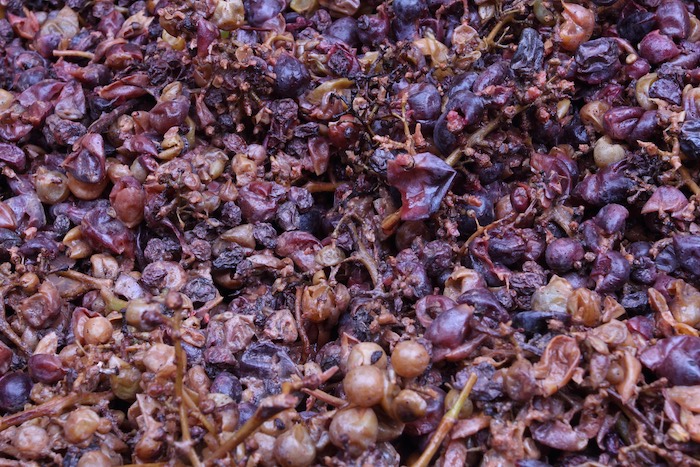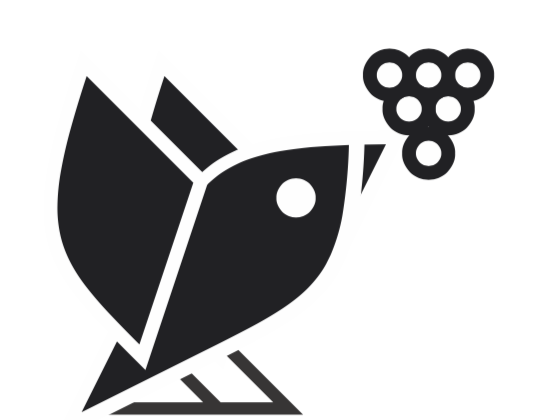
Ripasso is an ancient wine making technique used for centuries in Valpolicella wineries and now become very popular among wine enthusiasts. Ripasso, sometimes also called double fermentation, is a method used to give more structure, body and flavours to the basic Valpolicella wine.
In Autumn, after harvest, selected grapes for the Amarone and Recioto remain in lofts above wineries to dry for four months.
On the other hand, all other grapes are squeezed and fermented to make the basic Valpolicella Classico wine.
At the end of January, beginning of February, the semi-dried grapes for Amarone and Recioto are squeezed and fermented together with grape skins. After a long skin contact fermentation grape skins are removed and wine is then stored for the ageing.
The basic Valpolicella wine that has been fermented in Autumn is then put over these Recioto and Amarone skins that, being still full of un-fermented sugars, start a second fermentation. These skins still contain aromatic compounds, tannins, etc. that thanks to this second, short fermentation are transferred to the simple Valpolicella wine. Ripasso is an Italian word meaning “review“, “go over again“.
Valpolicella Superiore Ripassois often referred to as “the poor man Amarone” or “baby Amarone“. Producers are not happy of these definitions but it is true that Valpolicella Ripasso is a wine that is in between the basic Valpolicella wine and the Amarone, sharing the freshness, the lightness and the value for money of basic Valpolicella wines, and some of the structures and flavours of the Amarone.
Ripasso and Trade Marks
In the past, in spite of its old tradition and the wide use, producers didn’t feel the need of mentioning the Ripasso technique on wine labels.
Few years ago, one of the biggest producers of Valpolicella registered the word Ripasso as a brand name and started to use it on labels, preventing other producers from doing the same. Of course they could still use the Ripasso technique but they couldn’t write the word anywhere on the label.
There was an uproar of protest among Valpolicella producers, and everybody became aware all of a sudden of the importance and the potentiality, especially on the markeing side of the issue, of the word Ripasso.
Other Valpolicella producers decided to start a lawsuit against the registration of Ripasso as a brand name, but in the mean time they couldn’t use the word.
Many producers developed not only new words to describe the technique, but also completely new wine making techniques to achieve the same results of Ripasso wines or even better.
On one hand words as ‘rigoverno‘, ‘doppia fermentazione‘, etc, started to appear on labels. On the other, producers started to dry grapes for the Valpolicella as they did for the Amarone. Of course drying period was shorter, usually a month. Other wine makers started to make Valpolicella Superiore wines with different percentages of fresh and dried grapes. Usually 70% of grapes are squeezed soon after harvest and fermented. The remaining 30% is dried for 3-4 months, then squeezed and added to the previously fermented wine starting a second fermentation.
In the end, Valpolicella producers won the lawsuit and the word Ripasso, being the name of a traditional and widely used wine making technique, not an original process, became available to all Valpolicella producers. The winery who initially registered the name decided not to use it any longer. Other producers who developed other names and techniques in most cases decided to stick to their new labels that in the meantime had become recognized and appreciated by many Valpolicella wine lovers.
Today, on the label beside the words ‘Valpolicella Classico DOC’, is possible to find a wide variety of other word expressing a specific wine making technique: Ripasso, Double Fermentation, Second Fermentation, etc. In all cases the wine is a medium bodied wine, fruity but yet with tertiary flavours and aromas, sometimes closer to a basic Valpolicella wine, sometimes closer to an Amarone wine.
Amarone Tours and Ripasso
In the selection of wineries for the wine tours in Valpolicella, Amarone Tours selects wineries using different wine making techniques in the production of Valpolicella Superiore so that guests and wine enthusiasts participating the tour will have the chance to taste a wide variety of wines.
When booking a tour with Amarone Tours do not hesitate to tell us if you have a favourite wine and we will try to arrange a visit in the winery producing it.
